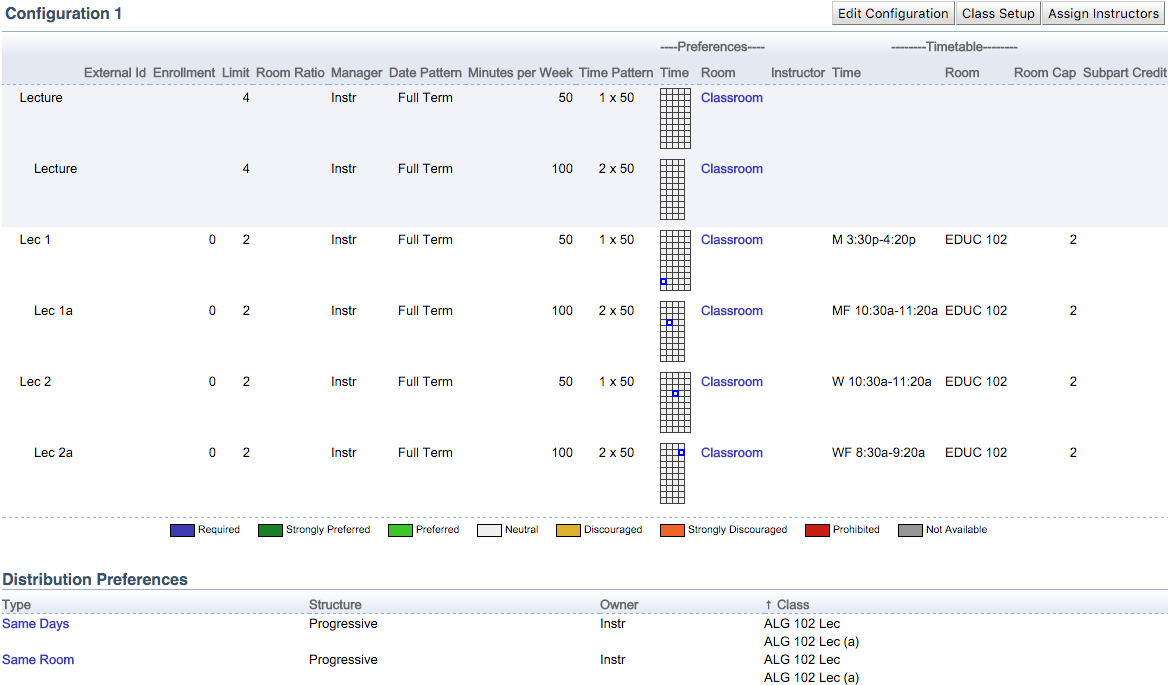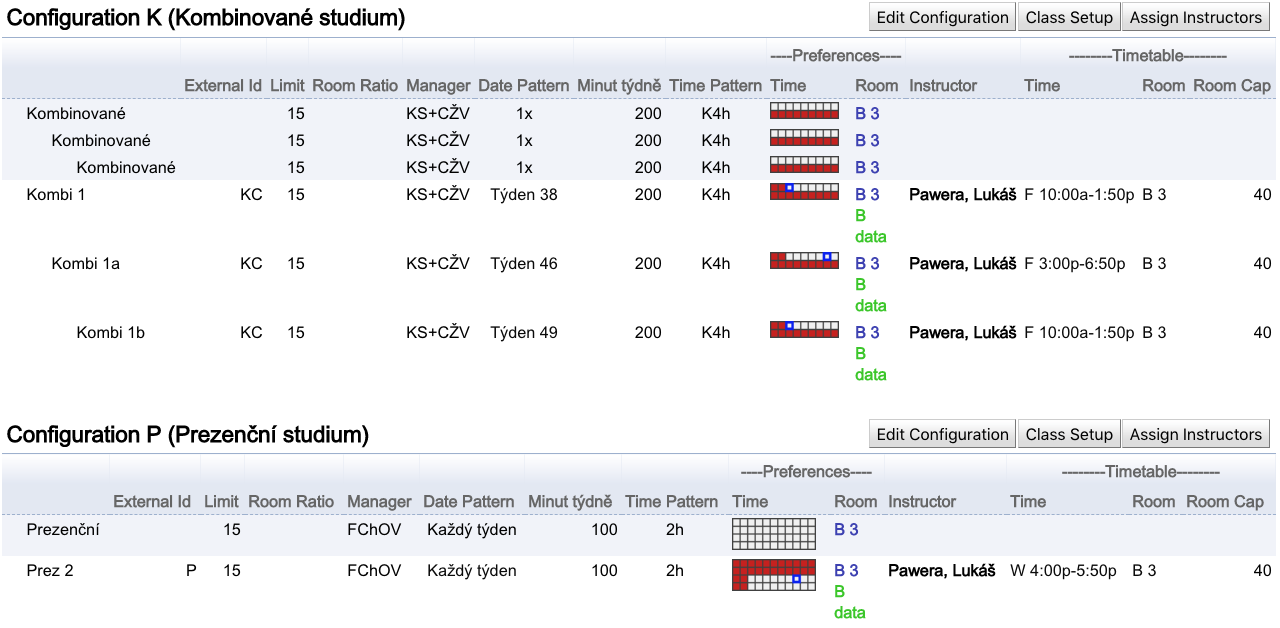How do I set up a class that meets irregularly? For example, two times a week but in different rooms. Or multiple times a semester, but at different times and/or days of the week.
For one class, all meetings must start at the same time, have the same length, and be placed in the same room. For instance, if you need to have Thursday’s meetings at a different time (or in a different room) than Tuesday’s meetings, this can be achieved by splitting the class into two.
Here is a similar example with a 3 x 50 class needing two meetings on the same day. In this case, each 3 x 50 class was split into one 1 x 50 class and one 2 x 50 class:

Also, the distribution preferences can be used to provide additional structure between the appropriate classes (same days and room in the above example).
Please note the nesting between the two lecture subparts (the second lecture is under the first one). This ensures that a student will either take the Lec 1 and Lec 1a combination or the Lec 2 and Lec 2a combination (but not Lec 1 with Lec 2a, etc.). It also helps with the distribution preferences (progressive structure will create the constraint only between the nested classes Lec 1 - Lec 1a and between Lec 2 - Lec 2a).
Moreover, you can also create a date pattern of the Alternative Pattern Set type, which can contain a selection of two or more date patterns. For example, you can have Week 1, Week 2, Week 3, … date patterns, and create a One Week date pattern that contains Week 1, Week 2, …, etc. In this case, the solver can choose which week the class will take place. Similarly, an Alternative Weeks date pattern can consist of Even Weeks and Odd Weeks date patterns. Or some more exotic combination.

To model a class following multiple date patterns (or to have multiple weekly meetings that do not start at the same time), you can split the subpart into multiple subparts. For example, instead of having Lec 1 that meets every week, there can be Lec 1 for the first meeting, Lec 1a for the second meeting, etc. These are usually modeled by scheduling subparts of the same instructional type and the number of classes that are nested under each other.

Also, they have UniTime configured so that these meetings are automatically scheduled on different weeks (prohibited same weeks), one after the other (required precedence), and preferably in the same room (strongly preferred same room), using the Automatic hierarchical constraints parameter in the solver configuration.
Also, suppose there are two or more scheduling subparts in a parent-child relation with the same instructional type (e.g., Lec - Lec a - Lec b stacked underneath). In that case, it is also possible to automatically inherit preferences and the date patterns from the parent subpart whenever possible by setting unitime.preferences.hierarchicalInheritance to true on the Application Configuration page (you would only need to set them up on the top-most level).
You can combine these approaches, so there could be, for instance, a course with a regular weekly lecture and three (irregular) seminar meetings.
| Back to UniTime Online Documentation | © UniTime 2025 | Content available under GNU Free Documentation License 1.3 |